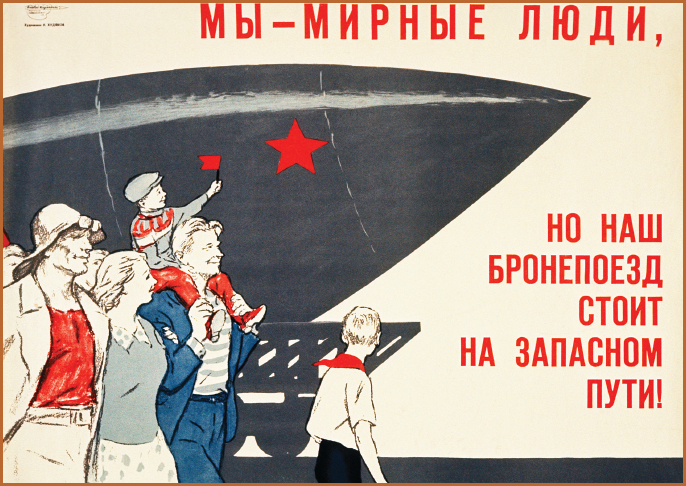Understanding Western Society
Printed Page 887
Chapter Chronology
Big Science in the Nuclear Age
During the Second World War, most leading university scientists went to work on top-secret projects to help their governments fight the war. The development by British scientists of radar to detect enemy aircraft was a particularly important outcome of this new kind of sharply focused research. The air war also greatly stimulated the development of rocketry and jet aircraft. The most spectacular and deadly result of directed scientific research during the war was the atomic bomb.
The impressive results of this directed research inspired a new model for science — Big Science. By combining theoretical work with sophisticated engineering in a large bureaucratic organization, Big Science could tackle extremely difficult problems, from new and improved weapons for the military to better products for consumers. Big Science was extremely expensive, requiring large-scale financing from governments and large corporations.
After the war, scientists continued to contribute to advances in military technologies, and a large portion of all postwar scientific research supported the growing arms race. (See “Picturing the Past: A Soviet View of the Arms Race.”) After 1945, roughly one-quarter of all men and women trained in science and engineering in the West — and perhaps more in the Soviet Union — were employed full-time in the production of weapons.

A Soviet View of the Arms RaceThis propaganda poster from the 1950s reads, “We are a peaceful people, but our armored train stands in ready reserve.” The reference to the armored train recalls the Bolshevik use of trains in combat against the White armies during the Russian civil war of the early 1920s. (© Sovfoto)> PICTURING THE PASTANALYZING THE IMAGE: What does the “armored train” of the 1950s look like? How does the artist portray the Soviet people, and how does this supposedly peaceful image express Cold War hostility?CONNECTIONS: Why might the Soviet citizens again need protection at this time, and why would the artist reference the Russian civil war? How did the emergence of Big Science contribute to the global confrontation between the superpowers?
Sophisticated science, lavish government spending, and military needs came together in the space race of the 1960s. In 1957, the Soviets used long-range rockets developed in their nuclear weapons program to launch Sputnik, the first man-made satellite to orbit the earth. In 1961, they sent the world’s first cosmonaut circling the globe. Embarrassed by Soviet triumphs, the United States made an all-out commitment to catch up with the Soviets. The U.S. National Aeronautics and Space Administration (NASA), founded in 1958, won a symbolic victory by landing a manned spacecraft on the moon in 1969.
Advanced nuclear weapons and the space race were made possible by the concurrent revolution in computer technology. The search for better weaponry in World War II boosted the development of sophisticated data-processing machines, and advances in computer technology continued in the decades following the war. By the 1960s, sophisticated computers were indispensable tools for a variety of military, commercial, and scientific uses.
Big Science had tangible benefits for ordinary people. During the postwar green revolution, directed agricultural research greatly increased the world’s food supplies. Farming was industrialized and became more and more productive per acre. The application of scientific advances to industrial processes made consumer goods less expensive and more available to larger numbers of people. The transistor, for example, was used in computers but also in portable radios, kitchen appliances, and many other consumer products. In sum, in the nuclear age, Big Science created new sources of material well-being and entertainment as well as destruction.
How did the agreements reached among the Allies at Tehran in 1943 shape the postwar world?
